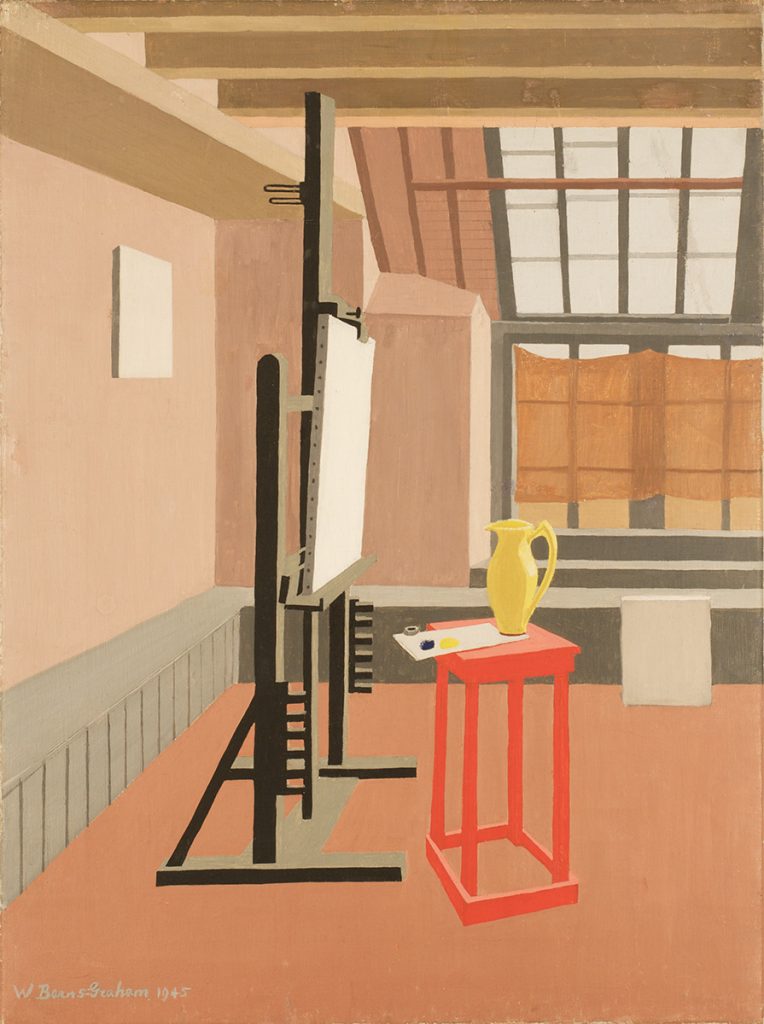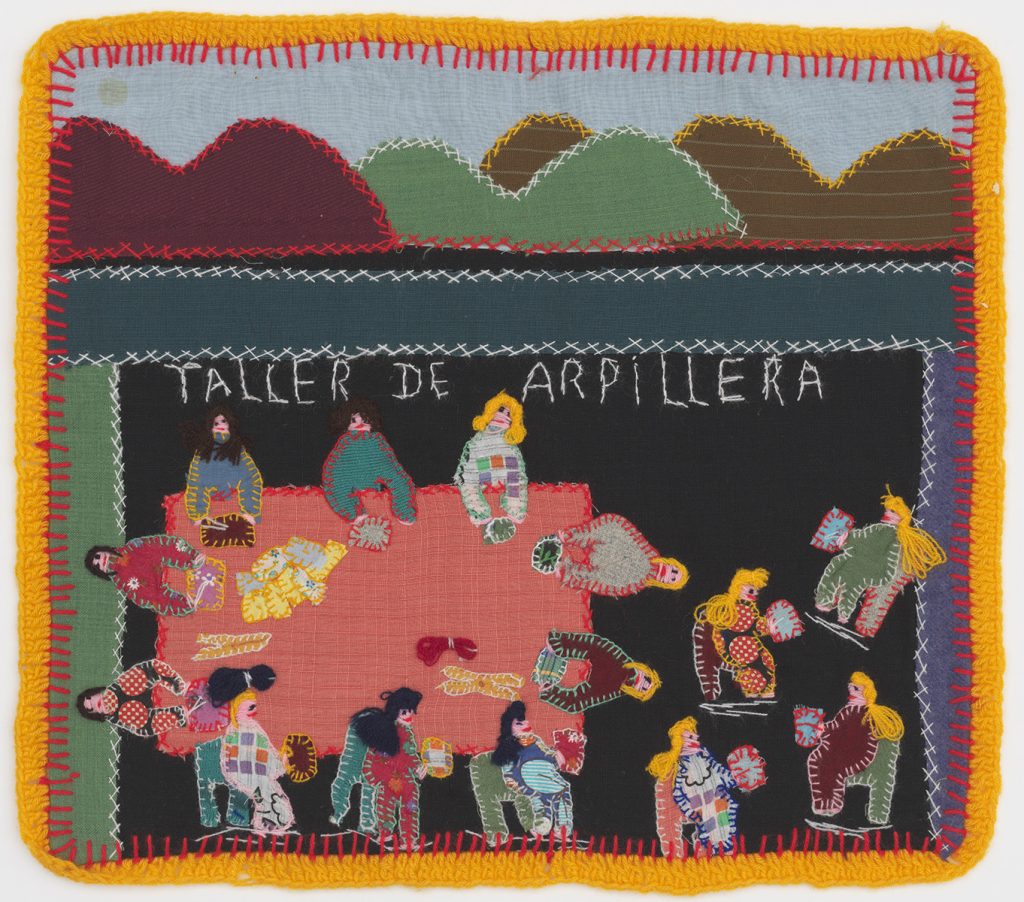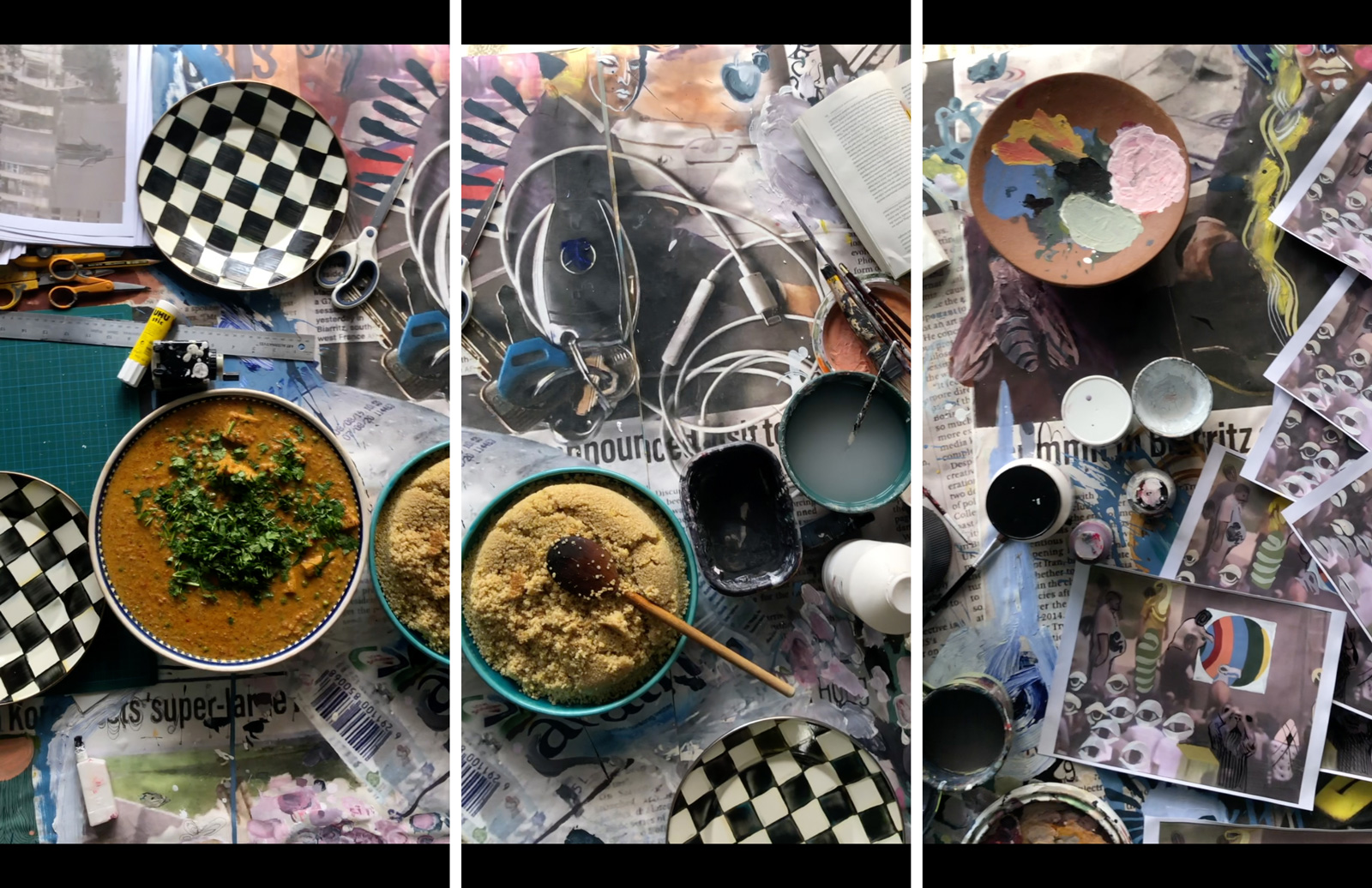Studios are fascinating and sometimes secret spaces where artists work, be it a kitchen table, a derelict house or a disused warehouse. Much more than a workspace, they are places of experimentation, reflection, and collaboration, and where the magic can happen for the artist. They offer a snapshot of the creative mind at work and its owner’s inspirations.
These creative crucibles are the subject of a new exhibition at the Whitechapel Gallery in east London. A Century of the Artist’s Studio: 1920 to 2020 charts how modern artists have used their studios in myriad different ways. Across more than 100 works, the artist’s studio is expressed as a refuge, prison, collective workspace, laboratory, factory, exhibition space and as a site of protest, still life and performance.

Wolfgang Tillmans, after party (c), 2002. © Wolfgang Tillmans
Courtesy of Maureen Paley, London

Mequitta Ahuja, Notation, 2017. Courtesy the artist and Tiwani Contemporary.

Pablo Picasso, L’Atelier (The Studio),1955. © Succession Picasso/DACS, London 2021.

Wilhelmina Barns-Graham, Studio Interior (Red Stool, Studio), 1945. Wilhelmina Barns-Graham Trust © Wilhelmina Barns-Graham Trust.

Tracey Emin,

Kerry James Marshall, Untitled (Painter), 2008. Collection of Charlotte and Herbert S. Wagner III Courtesy of the artist, David Zwirner London and Jack Shainman Gallery, New York
Photo: Steve Briggs.

Lisa Brice, Untitled,
2019. © Lisa Brice Courtesy the artist; Stephen Friedman Gallery, London; Salon 94, New York; and Goodman Gallery, South Africa. Katrin Bellinger Collection.

Egon Schiele, Office at the Mühling Prisoner of War Camp of Mühling, 1916. Katrin Bellinger Collection.

Inji Efflatoun, Portrait of Inji Efflatoun, 1958. Courtesy Mathaf: Arab Museum of Modern Art.

Martha Rosler, Semiotics of the Kitchen, 1975. Courtesy of Martha Rosler and Electronic Arts Intermix (EAI), New York.

Taller Arpilleras – Unknown female artist, [Untitled], 1970s. Photography: Tate.
The multimedia, culturally diverse exhibition starts with Louise Bourgeois’ ‘room’ sculpture (Cell IX), which considers the influence the studio has on the mind, imagining it as a prison and portal. There are photographs of great modern icons such as Pablo Picasso and Lucian Freud in their studios, a photographic installation of Francis Bacon’s 1960s studio on London’s Reece Mews, which reveals a world of colour, gloom and mess that fizzles with creative energy, and Kerry James Marshall’s Untitled (Painter) painting, which depicts a Black woman artist holding an oversized painter’s palette.
Featuring works by Egon Schiele, Bacon, Tracey Emin, and Barbara Hepworth, the exhibition puts the artist’s studio centre stage and conceives the studio in two ways, a ‘public’ studio, where the artist presents their persona, and a ‘private’ studio, between the sitter and artist. ‘[The show] is a celebration of spaces of artistic conception and production and it considers how these have changed and evolved over the last century,’ explains assistant curator Inês Costa.

Displayed in the show are 1970s embroideries by unknown Chilean female fibre artists. Named Arpilleras, after the burlap they are made of, they were produced in workshops that took place illegally behind closed doors during the Pinochet dictatorship. Another work that shows the studio as a site of political resistance is Nikhil Chopra’s 2015 installation La Perla Negra: Plaza de Armas, formed of a metal cage with roof housing canvases and props. Chopra lived and painted in the cage for 60 hours on Havana’s Plaza de Armas dressed as a 1950s American woman of colour.
There’s a reconstructed section of Kurt Schwitter’s 1930s Merzbau – a room-sized sculptural construction with wooden and plaster stalactites that the artist built in his Hanover home; gothic self-portraits by photographer Francesca Woodman who used as abandoned houses as her studio; and a film reel of Andy Warhol’s silver foil-covered NYC studio, The Factory, which was a mecca for the hip crowd in 1960s New York and probably the most famous of its kind. This addition particular highlights the importance of artist’s studios in keeping creative scenes alive in cities where rents are always rising.



Courtesy Kettle’s Yard, University of Cambridge. Photography by Stephen White & Co
























